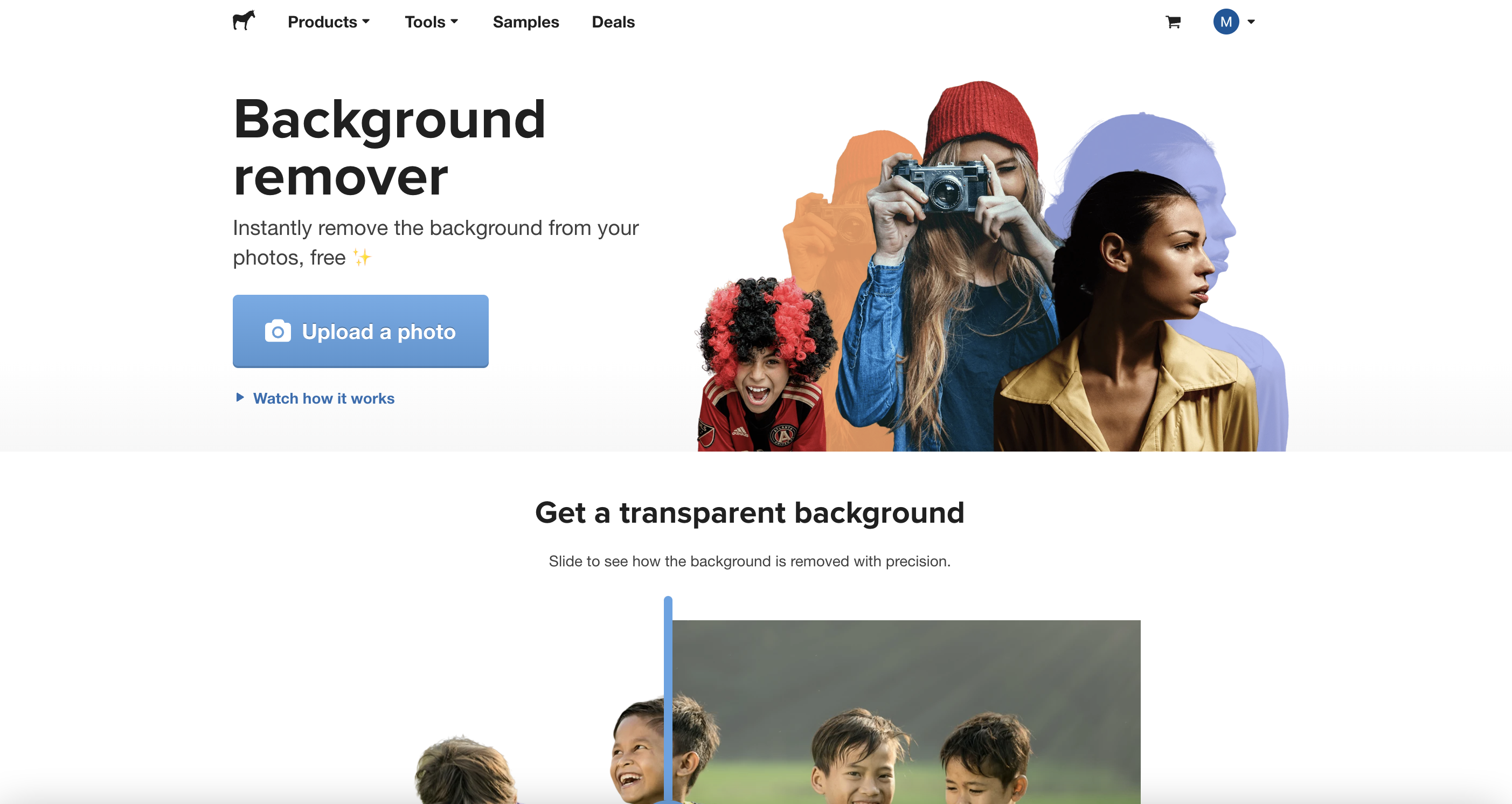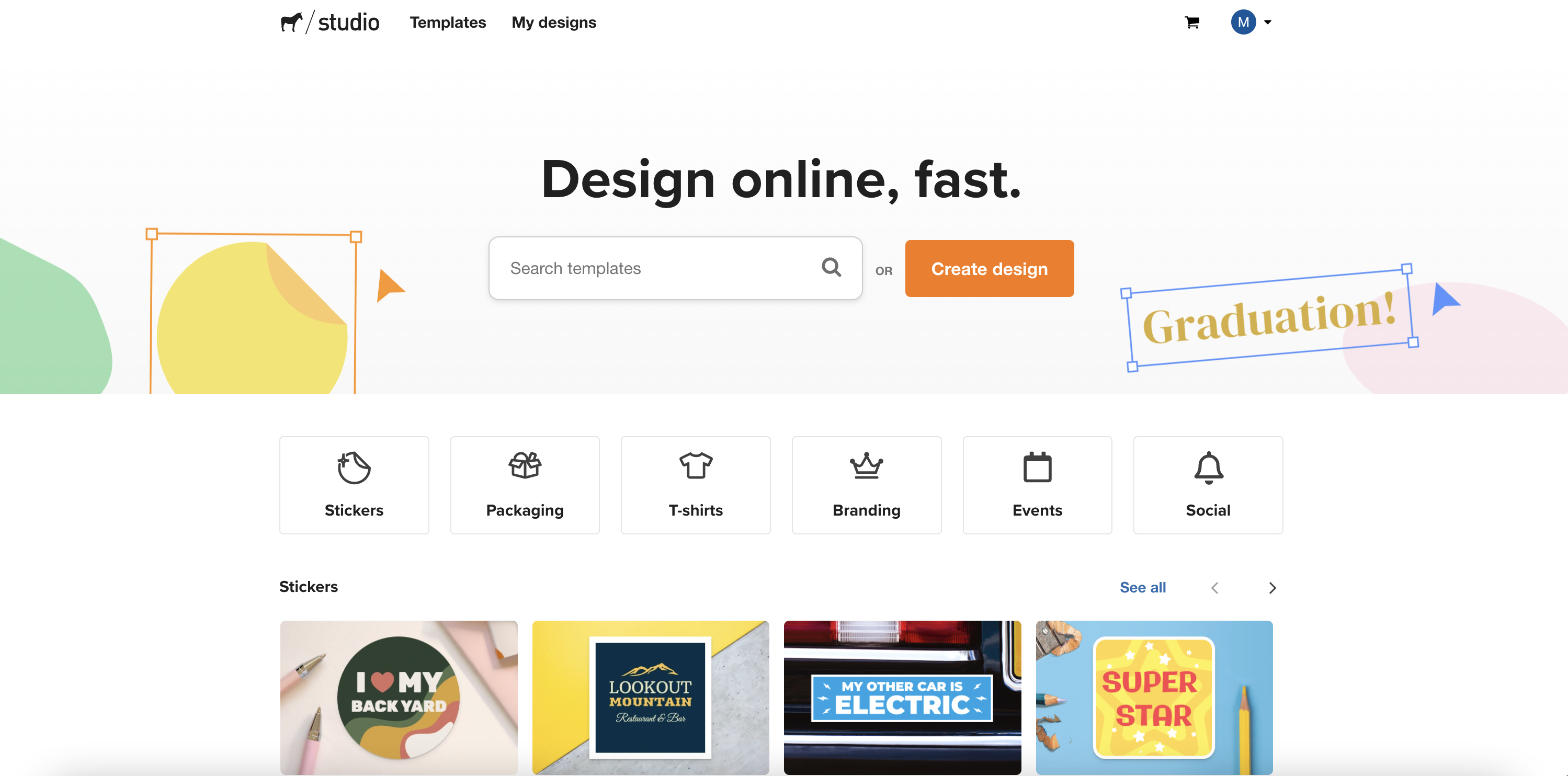Our 25+ Favorite Graphic Design Resources in 2022
Geplaatst door Sticker Mule op
Here at Sticker Mule, we've noticed that a lot of our customers are aspiring digital artists. To help them become the kick ass graphic designers, we've prepared this tutorial especially for them!
Whatever your working preferences, having the right selection of graphic design tools at your disposal is essential in order to work effectively and do your creative ideas justice. Made up of both hardware and software, the range of tools available to graphic designers is vast, as are their price tags, so being able to select the right tools that match your current level of expertise is critical.
From tablets and laptops, to free photo background removing apps, here’s our must-have tools for the graphic designer beginner.
What are the basic tools needed by graphic designers?
Hardware
First of all, you’re going to need some basic devices and tech to complete your graphic design projects.
1. A high-end smartphone
If ever you needed an excuse to splash out on a top of the range smartphone, kickstarting your graphic design career or hobby is it!
While the majority of the population will get by with standard specs on their mobile devices, a graphic designer will likely demand a little more from it.
Making edits
A top end smartphone, with a large screen can be a gamechanger for your productivity levels, allowing you to edit on the move.
A great camera
A graphic designer is always on the lookout for opportunities to take some top-class original photography to use either as inspiration or to use directly in their designs. You can expect a high-end smartphone to come with a high-end build in camera, meaning you’ll always be equipped to snap that critical shot when the opportunity arises.
2. A powerful laptop
It’s well known that designers tend to have a strong preference towards Macs over PCs for their work. Precisely why, is a tricker question to answer! Google designer, Austin Knight, asked a bunch of designers why they prefer Macs. Ultimately, it comes down to legacy (the Mac was developed for designers), better font rendering, better user experience, plus…. They’re pretty!
MacBook Pro's are typically seen as the best option for any designer (Techradar crowned the Apple MacBook Pro with 13-inch screen as “the best laptop for graphic design in the world”). However, it has also been argued that you get more power for your money with an iMac.
If you’re designing stickers (and we hope you do!) you're essentially designing for print so having that extra power will make your life easier, helping all of your software, such as Photoshop, to run more smoothly.
3. A graphics tablet
A graphics tablet (or pen tablet, or drawing tablet) looks similar to a standard tablet device, however, it is a very different piece of equipment. A graphics tablet connects to your main device, your Mac for instance. It has a touch-sensitive drawing surface which you can ‘draw’ on with a stylus which then acts as a cursor on your monitor. With a bit of practice, it becomes much easier to control than your typical mouse.
Wacom is the most popular manufacturer of graphics tablet, so you’d be in good company beginning your search there. It’s compatible with both Adobe Illustrator and Photoshop.
Who needs a graphics tablet?
Not every type of graphic designer will need to have a graphics tablet, but if you are someone who wants to work on many different types of graphic design projects, or would like to work on animation or illustration projects, then a graphics tablet would be an important tool for you.
Software & Design Tools
Once you have your hardware items, now it’s time to equip them with the software. You have a number of options here. You can go straight for the well known Adobe Creative Suite (now called the Adobe Creative Cloud) which includes the likes of Photoshop, InDesign, Illustrator and more.
Or, if you’re not in a position to make that financial commitment, it might be a good idea to try out some online alternatives. Let’s run through your options.
Photoshop
Photoshop is used by almost any kind of designer such as web developers, graphic designers and photographers. It’s most commonly used for image editing, retouching and creative mockups.
Online Photoshop alternatives:
This is an open source, free, image editing tool. It only required a small download and includes many of Photoshop’s most popular features.
Pixlr is a free online photo editor based in the cloud. It’s built by Autodesk, the makers behind other powerful tools such as AutoCAD, so it certainly comes with pedigree. It’s a simpler, smaller solution to photo editing compared to Photoshop but is easy to use and fast! Perfect for beginners.
Lunapic is another free, online graphic editor. It’s got plenty of options and functionally to play with and you can also edit video.
Illustrator
Illustrator is a vector-based editing software. It is different to Photoshop, which is pixel-based. It is used to create designs such as logos, graphics, vector illustrations and fonts. The advantage of vector-based software over pixel-based is that a vector graphic does not lose quality as it is scaled up or down in size. This makes it a better option for anything that is intended for print.
Online Illustrator alternative
Like Illustrator, Inkscape is a vector-based software, but is open source and free! The options are comprehensive, allowing you to do most of what you can do on Illustrator. It’s also regularly updated.
InDesign
InDesign is a desktop publishing software, frequently used for creating print materials like brochures, flyers, magazines and even books.
Online InDesign alternative
Scribus is an open source desktop publishing application. It’s free, and a great alternative to InDesign, allowing you to easily layout designs for print materials.
Premiere Pro
Adobe Premiere Pro is a timeline-based video editing software used by everyone from filmmakers and TV broadcasters to journalists, students and YouTubers.
Online Premiere Pro alternative
If you’re like most designers and opt for a MacBook for your graphic design work, then Apple’s iMovie program is a highly reliable and beginner-friendly alternative to Premiere Pro, covering you for basic effects, transitions and cuts.
While iMovie is great for beginners, it wouldn’t be right not to mention DaVinci Resolve. It’s a wholly comprehensive, free editor featuring advanced trimming, editing, and effects. It might be a little complex for beginners, but if you’re looking for something free, with some advanced features, look no further than DaVinci Resolve.
After Effects
After Effects is the industry standard, animation-based tool used for visual effects and motion graphics. While Premiere Pro focuses on video editing, After Effects is the tool that help you create the extra flourishes that make all the difference, such as title sequences and 2D cartoon animations.
Online After Effects alternative
Blender is free to use and can accomplish pretty much anything After Effects can, so it is a genuinely powerful alternative. However, beginners should be warned that it does have a reputation for being more difficult to use.
What are the best graphic design resources?
Now that you’ve got a handle on the fundamental devices, software and online tools you’ll need for your graphic design, here’s a handy rundown of some additional tools you can add to the mix for some extra touches and details.
- For free background removal
- For fonts
- Fontshop
- Google Fonts
- Emotype
- BeFonts
- For design software online
- For icons
- Noun Project
- Flat Icons
- For stock photos
- Shutterstock
- iStock
- Pixabay
- Unsplash
- For resizing high-quality images
- For vectorizing images
- For free stock videos
- Coverr
- Mixkit
- Motion Places
- Videvo
- Social Media Mockups
- AdParlor
- Device mockup generator
- ScreenPeek
- Shotsnapp
- Brand design mockup
- Mockupworld
What are the best websites for design inspiration?
As you progress with your designs, you may, like most creatives have at one time or another, find yourself in need of some inspiration! Well, don’t worry. Here are some great sources to help inspire your creative juices.
Behance is an online platform that allows designers to showcase their portfolios whether they be graphic design, fashion, illustration, photography or web design. Not only is it a great outlet for designers to display their work, it’s a fantastic museum of creative excellence to spend some time exploring to inspire your own creative ideas.
Oh, and it’s also free to use!
This is another fantastic resource for your design inspiration or to showcase your work. It is free to use, BUT if you want to use it as a channel to showcase your work, bare in mind that it is an invite-only community. However, there’s nothing to stop you from using it as a source of inspiration with amazing designs to browse in branding, illustration, print, product design, typography and web design.
If websites are your jam, check out Httpster for a treasure trove of web design inspiration.
What websites or apps can I use to make money out of my designs?
Let’s get down to the business side of things.
You might be content to keep your graphic design projects as a fun side hobby. Or, you might be interested in exploring how you can make money from your designs. Aside from working professionally in a design role, there are other ways in which you can monetize your love of design. Here are a few means to consider.
1. Start a Patreon campaign
Patreon is an online platform designed to help creators of any type get paid for the art they create. All you need to do is set up a free account, create a page telling people who you are, what you do and why they should make a financial contribution to your work. Artists usually offer some small incentive in return such as exclusive material.
2. Take on freelance gigs
There are tonnes of vibrant platforms out there where potential customers are matched with willing designers. You could sign up to Fiverr, for example and list some4. ‘gigs’ you’re willing to do for $5. Once you’ve completed a number of these $5 gigs, you become eligible to offer higher priced gigs and earn more money.
3. Sell your graphics to stock image sites
Maybe you have some stunning photography as a result of that high-end smartphone we discussed. Or perhaps you have some original graphics gathering dust. These are just two examples of design work that you could potentially sell to stock imagery sites like Shutterstock.
4. Create customized stickers in Sticker Mule and sell them
Etsy is a great platform for designers to sell their work. Browse Etsy and you’ll find custom prints, canvases, t-shirts and... stickers! Check out this interesting thread on Reddit about how one illustrator turned their designs into customized stickers with Sticker Mule and hit 100 sales selling them on Etsy.
Choosing the right graphic design tools can be challenging, especially for beginners. There’s a lot of choice out there and a lot of eye watering price tags. Our advice is to keep it simple in the beginning. Focus on getting a suitable laptop with a high res monitor, a high end camera (or smartphone) and a graphics tablet if you want to try some illustration (you can’t go far wrong with a Wacom).
When it comes to software, the Adobe Creative Cloud will equip you with all you need but keep in mind that there are some very impressive free software alternatives available that would definitely be worth checking out if you’re not ready to splash out on the Adobe Cloud.
Happy designing!


Reacties